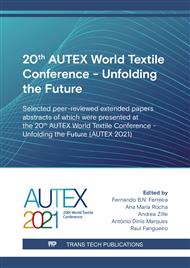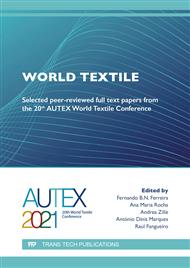p.99
p.113
p.121
p.131
p.139
p.149
p.155
p.163
p.169
Fashion Design and Production through the Social Economy Lens: Contributions and Challenges for a Holistic Approach
Abstract:
The growing environmental crisis and the proliferation of social inequality, with affective ties to the movements of predatory neoliberal globalization, desperately claim for the constitution of a truly sustainable future. To this end, it is essential to implement ethical, empathic, and cooperative behaviors and the reorientation of the market to consider the coexistence of human beings with nature in harmony. In this context, the global fashion system, characterized by mass production, low cost, and promoting excessive disposable consumption, devalues the natural diversity of the biosphere - from the extraction of raw materials to waste produced in the post-consumption - and contributes, directly and exponentially, to aggravate social inequalities and fracture, increasingly, the imbalance of ecosystems. The concept and practices of the Circular Economy have often been addressed to implement a sustainable production chain; however, it still neglects the social and cultural dimensions. Founded on the fashion production chain processes and their impacts on the lives of those who manufacture garments, on the community and environment in which we live, the purpose of this article is to present a sustainable model for designing and manufacturing fashion products. Social Economy values such as the social development of the people and communities involved, holistic development of the human being, diffusion of feelings of cooperation, respect, solidarity, and commitment, and, above all, ethical behaviors are the groundwork of this study. This framework absorbs characteristics of the Social Economy in the fashion industry and values sustainable human development supported by educational programs for workers, socially responsible sewing workshops, collaborative design, recognition of local knowledge, and social entrepreneurship. Furthermore, this model will empower the wage-earner community that produces fashion by participating in the design and development of apparel products. The methodology used included a literature review and analysis of reports; after identifying critical points of Social Economy theories, this study aims to provide a fairer model for developing products oriented towards the humanization of productive relations, transparency, and sustainability. Despite including SE's humanistic components to fulfill the CE's social gaps, this plan for Social Circularity can only overcome a few of the recurrent problems in fashion production. Standing as an in-progress framework requires both validation and deepening of socio-ecological aspects in implementing a holistic economy in its total multidimensionality.
Info:
Periodical:
Pages:
139-148
Citation:
Online since:
July 2022
Authors:
Price:
Сopyright:
© 2022 Trans Tech Publications Ltd. All Rights Reserved
Share:
Citation:



